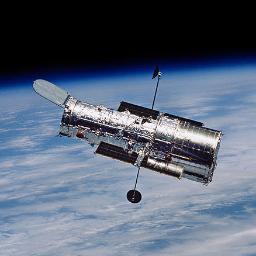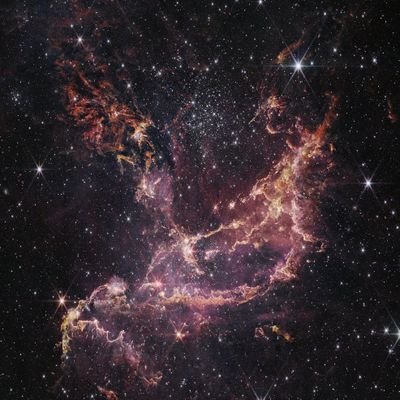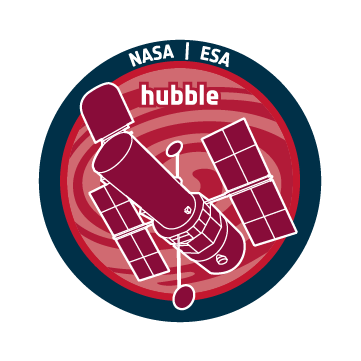#hubblefriday search results
M82 has a star-powered heart! 🌟 Forming stars 10 times faster than our Milky Way, M82 contains "super" star clusters that each hold hundreds of thousands of stars. Find out more on this #HubbleFriday view: go.nasa.gov/47KTcjo

The cloudy starscape seen in this week's #HubbleFriday view resides within the Large Magellanic Cloud, a nearby dwarf galaxy. This is N11, the galaxy’s second-largest star-forming region: go.nasa.gov/42uVi3h

A massive, spacetime-warping cluster of galaxies swarms this week's new #HubbleFriday view! Called Abell 209, this cluster is a whopping 2.8 billion light-years away. Its mass is powerful enough that it bends light traveling from galaxies behind it: go.nasa.gov/4eN2flt

Low brightness, high interest 💡 Hubble examined NGC 45, seen in this new #HubbleFriday view. It's classified as a low surface brightness galaxy – a type of galaxy fainter than the night sky itself. Thankfully, Hubble's sensitivity is up to the task: go.nasa.gov/4mKw60z
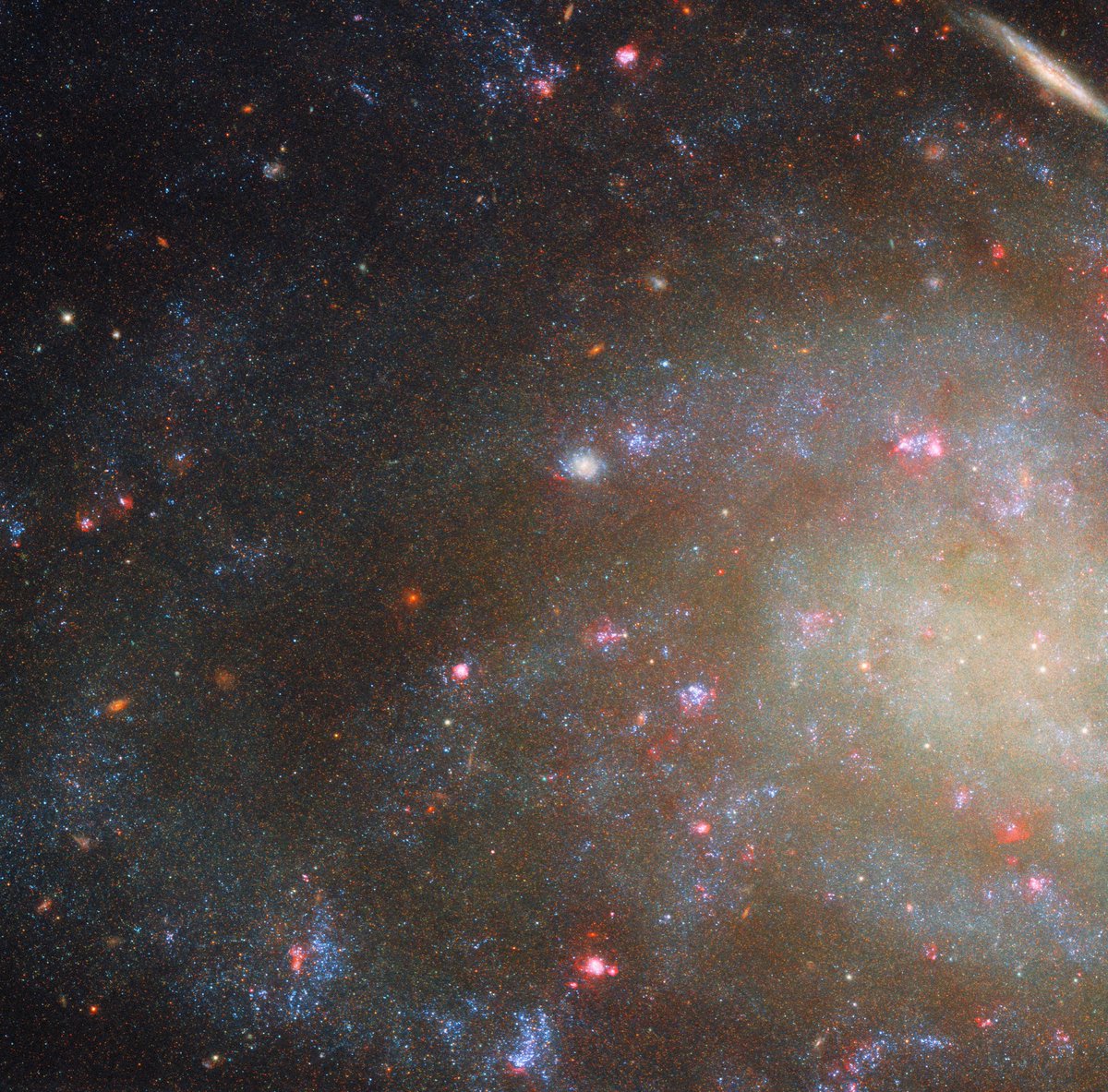
A face-on #HubbleFriday! 🌀 This new Hubble image gives a great view of the spiral galaxy NGC 2835, which lies 35 million light-years away. NGC 2835's arms are dotted with young blue stars, sweeping around an oval-shaped center where older stars reside: go.nasa.gov/4myoG0E

Back for more! This new #HubbleFriday view shows a portion of the Tarantula Nebula, one of Hubble's most frequent targets. Located 160,000 light-years away, it's home to the most massive stars known– some roughly 200 times as massive as our Sun: go.nasa.gov/45I41B6

NGC 2775 is difficult to define. The galaxy in this #HubbleFriday image is home to a smooth center mostly devoid of gas, resembling an elliptical galaxy. But it also has a dusty ring with star clusters, like a spiral galaxy. So what is it? Find out here: go.nasa.gov/4gI7Rhu

Galactic tug-of-war! This #HubbleFriday image shows the spiral galaxy M96. Its asymmetrical appearance might be due to the gravitational pull of nearby galaxies, causing its uneven distribution of gas and dust, along with its slightly skewed spiral arms: go.nasa.gov/4g9wgMP

NGC 7456 is keeping Hubble busy! The galaxy in this new #HubbleFriday view is home to plenty of stellar activity. Astronomers are using Hubble to track NGC 7456's new stars, clouds of hydrogen, and star clusters to learn how the galaxy evolved over time: go.nasa.gov/3JMvVDO

Galaxies galore! While the main focus of this new #HubbleFriday view is the massive spiral galaxy NGC 1309, nearly every other point of light seen here is a whole other galaxy – some shining through less dense regions of NGC 1309 itself: go.nasa.gov/3IXyCBW

A cosmic cloudscape ☁️ This week's new #HubbleFriday image takes a look into one of our Milky Way's neighbors, the Large Magellanic Cloud. Located 160,000 light-years away, it's the largest of the Milky Way’s many small satellite galaxies: go.nasa.gov/3GShk8b
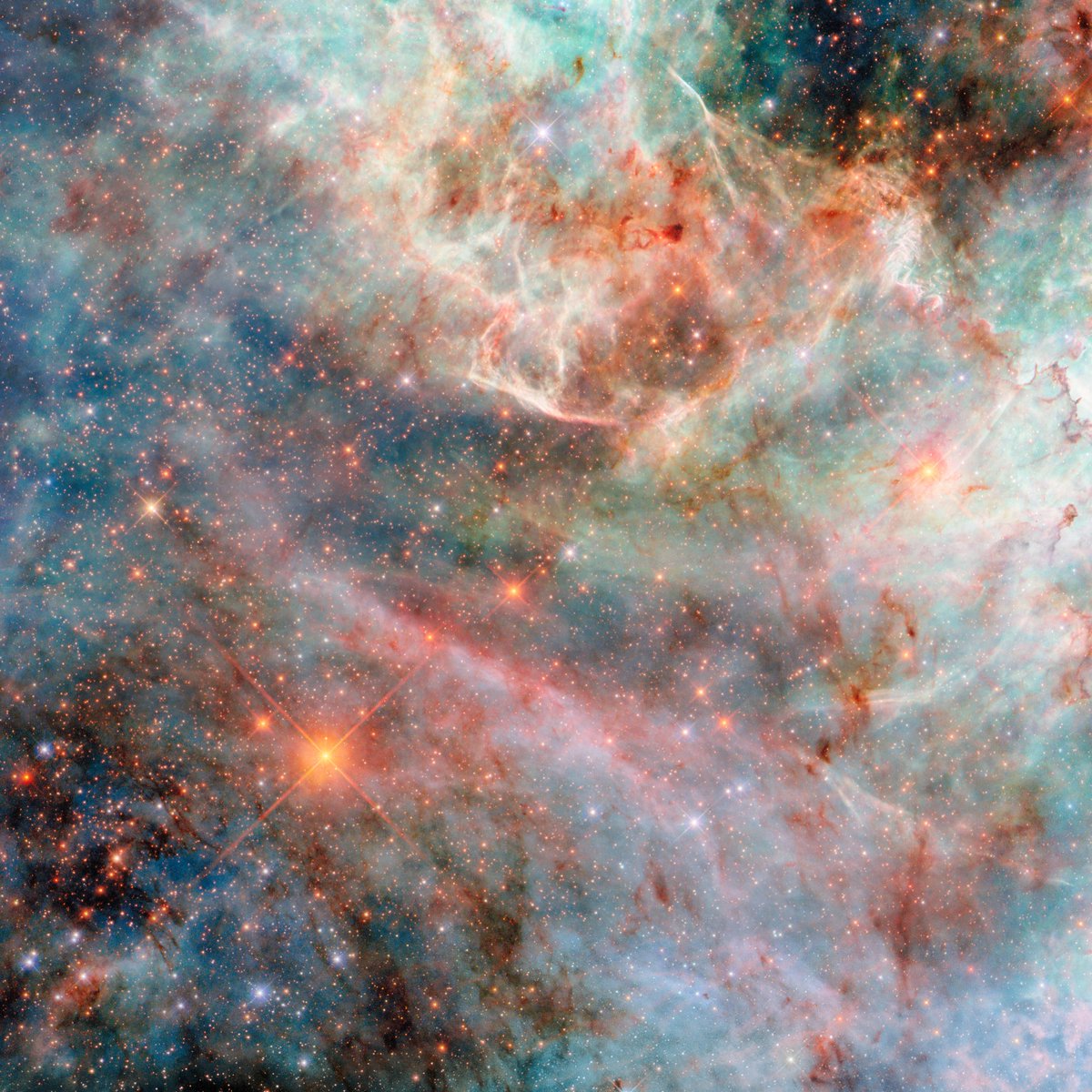
Pretty in pink 🎀 Despite its relatively small size, the dwarf galaxy NGC 4449 forms stars at a much faster rate than expected. The bright pink patches throughout show star-forming regions! Find out more on this #HubbleFriday view: go.nasa.gov/4e8bHiG
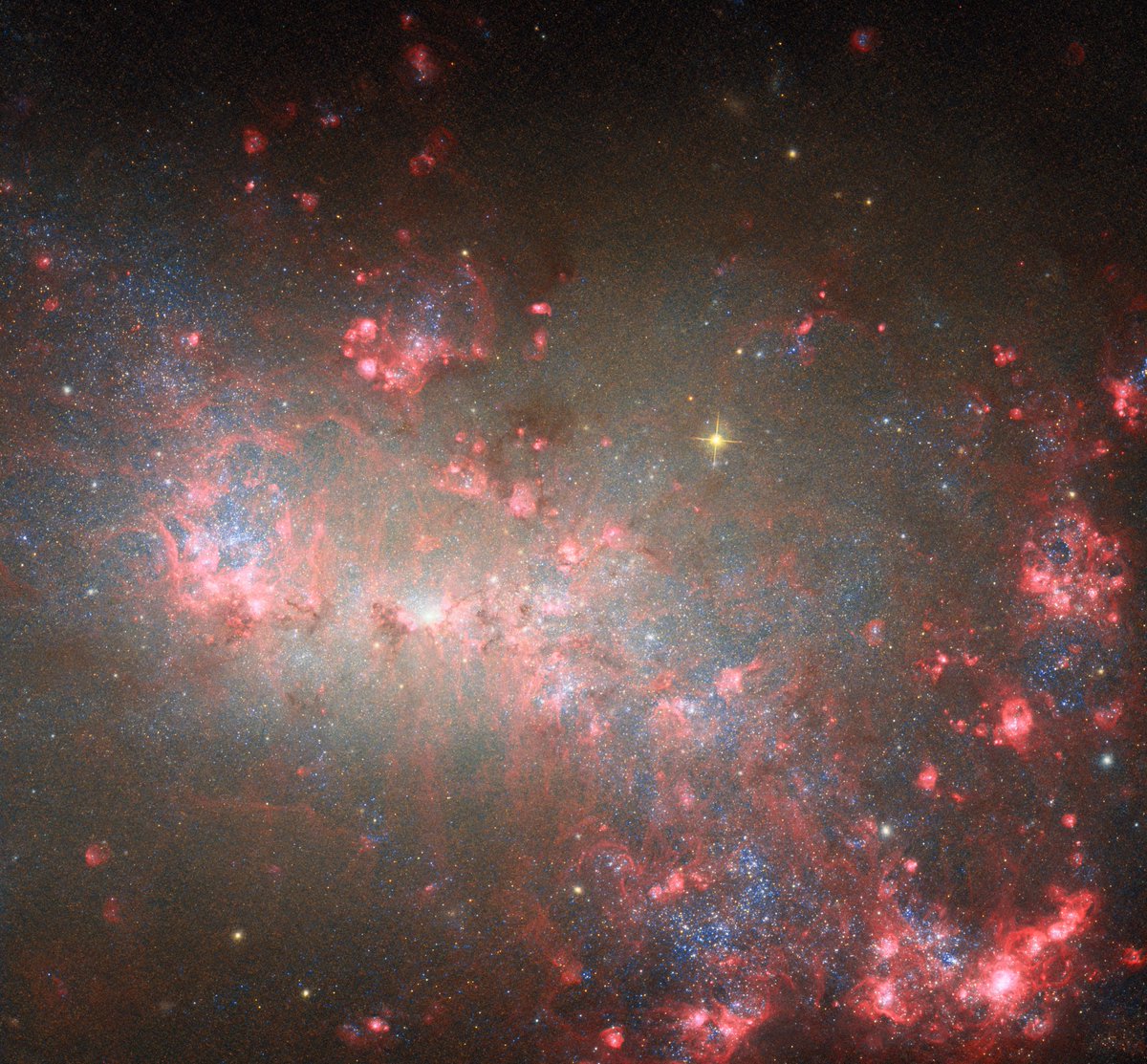
Look at a distance of 260 million light years! That's the distance to spiral galaxy UGC 678, which shines in this week's #HubbleFriday image.
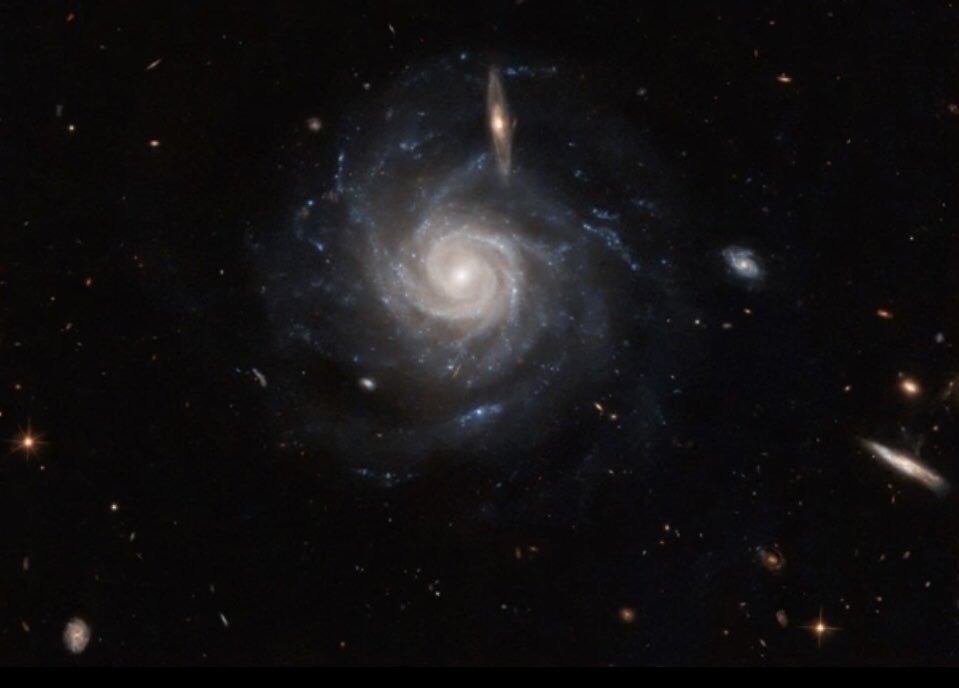
Digging up a galactic time capsule 🕰️ This #HubbleFriday view shows the globular cluster NGC 1786. Because of their stability and long lives, star clusters like these act as cosmic fossils, preserving stars from the early stages of a galaxy’s formation: go.nasa.gov/3TJzDzN

This #HubbleFriday image shows the spiral galaxy M96. Its asymmetrical appearance might be due to the gravitational pull of nearby galaxies, causing its uneven distribution of gas and dust, along with its slightly skewed spiral arms.⬇️
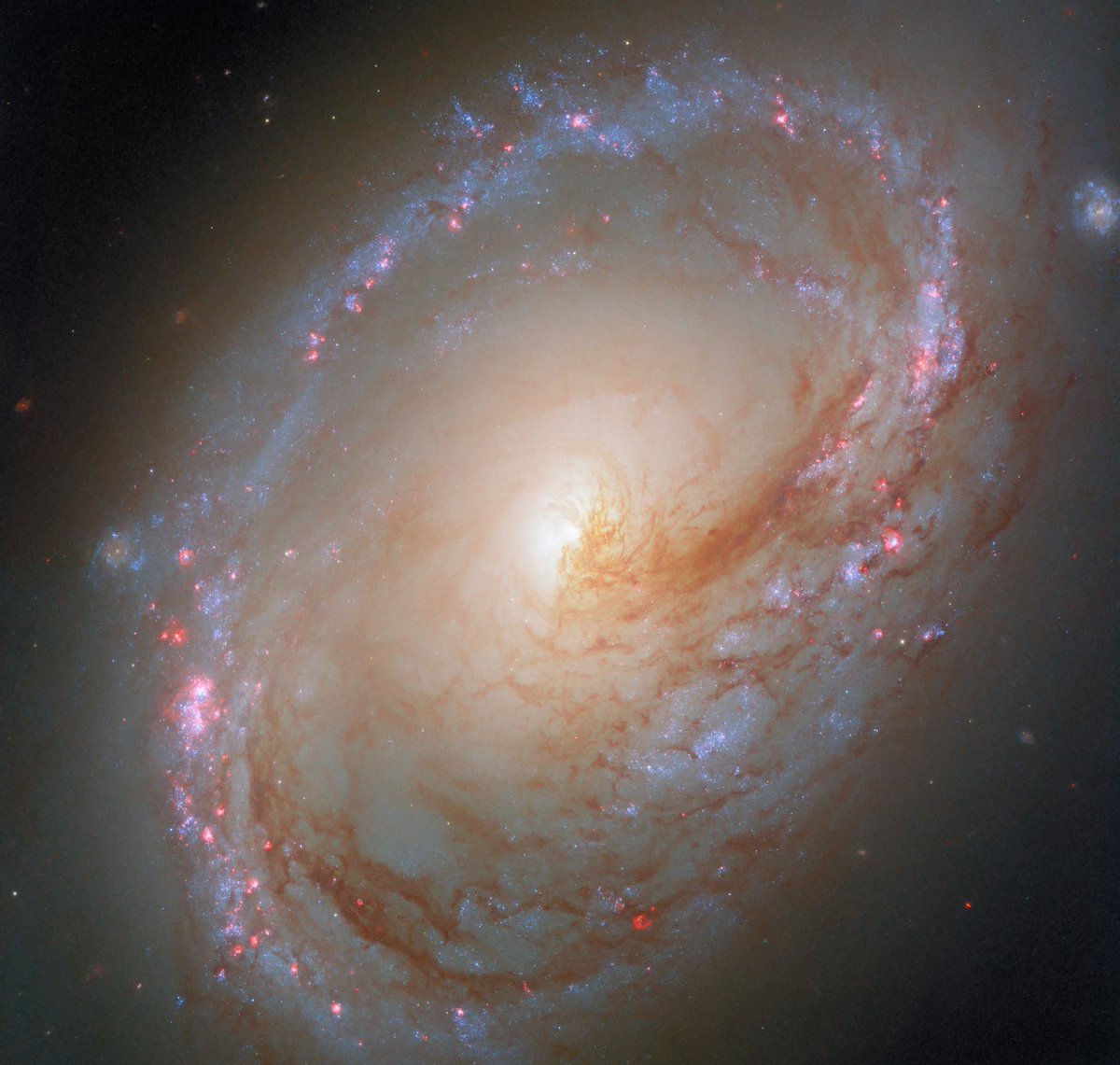
A cosmic weigh-in 💪 Hubble observations, like the ones captured for this new #HubbleFriday view of UGC 11397, will help scientists weigh nearby supermassive black holes, and understand how black holes grew early in the universe’s history: go.nasa.gov/44KIRkv

A starry spectacle ✨ This new #HubbleFriday view shows the galaxy NGC 685. Located about 64 million light-years away, it was studied by Hubble for two observing programs, both focused on star formation: go.nasa.gov/4jD1MTo

Shining serenely in this new #HubbleFriday view, IC 758 might look calm – but it hides a cataclysmic past. Researchers are using Hubble to gather clues about a previous supernova explosion in this galaxy: go.nasa.gov/43JTlkE

NGC 3507 takes centerstage in this week's new #HubbleFriday view! It's classified as a "barred" spiral galaxy because its arms emerge from the ends of a central bar of stars rather than the central core of the galaxy. Keep reading: go.nasa.gov/43EV9Ky

It’s getting hot in this star factory (NGC 4571)! ⭐🏭 Access more space-themed .gifs at our giphy page: ow.ly/kB3u50XjymJ
M82 has a star-powered heart! 🌟 Forming stars 10 times faster than our Milky Way, M82 contains "super" star clusters that each hold hundreds of thousands of stars. Find out more on this #HubbleFriday view: go.nasa.gov/47KTcjo

Back for more! This new #HubbleFriday view shows a portion of the Tarantula Nebula, one of Hubble's most frequent targets. Located 160,000 light-years away, it's home to the most massive stars known– some roughly 200 times as massive as our Sun: go.nasa.gov/45I41B6

Galactic tug-of-war! This #HubbleFriday image shows the spiral galaxy M96. Its asymmetrical appearance might be due to the gravitational pull of nearby galaxies, causing its uneven distribution of gas and dust, along with its slightly skewed spiral arms: go.nasa.gov/4g9wgMP

NGC 7456 is keeping Hubble busy! The galaxy in this new #HubbleFriday view is home to plenty of stellar activity. Astronomers are using Hubble to track NGC 7456's new stars, clouds of hydrogen, and star clusters to learn how the galaxy evolved over time: go.nasa.gov/3JMvVDO

A face-on #HubbleFriday! 🌀 This new Hubble image gives a great view of the spiral galaxy NGC 2835, which lies 35 million light-years away. NGC 2835's arms are dotted with young blue stars, sweeping around an oval-shaped center where older stars reside: go.nasa.gov/4myoG0E

The cloudy starscape seen in this week's #HubbleFriday view resides within the Large Magellanic Cloud, a nearby dwarf galaxy. This is N11, the galaxy’s second-largest star-forming region: go.nasa.gov/42uVi3h

NGC 2775 is difficult to define. The galaxy in this #HubbleFriday image is home to a smooth center mostly devoid of gas, resembling an elliptical galaxy. But it also has a dusty ring with star clusters, like a spiral galaxy. So what is it? Find out here: go.nasa.gov/4gI7Rhu

Low brightness, high interest 💡 Hubble examined NGC 45, seen in this new #HubbleFriday view. It's classified as a low surface brightness galaxy – a type of galaxy fainter than the night sky itself. Thankfully, Hubble's sensitivity is up to the task: go.nasa.gov/4mKw60z

Galaxies galore! While the main focus of this new #HubbleFriday view is the massive spiral galaxy NGC 1309, nearly every other point of light seen here is a whole other galaxy – some shining through less dense regions of NGC 1309 itself: go.nasa.gov/3IXyCBW

This #HubbleFriday image shows the spiral galaxy M96. Its asymmetrical appearance might be due to the gravitational pull of nearby galaxies, causing its uneven distribution of gas and dust, along with its slightly skewed spiral arms.⬇️

Behold the mesmerizing, cloudy starscape featured in this week's #HubbleFriday! This stunning vista lies within the Large Magellanic Cloud, a satellite dwarf galaxy orbiting our Milky Way and one of the closest galactic neighbors at about 160,000 light-years away. Known as N11…

NGC 5248 is a spiral full of starbursts. This #HubbleFriday galaxy's winding spiral arms are home to bright regions of intense star formation. It even has two ring-shaped starburst regions around its center, filled with young clusters of stars: go.nasa.gov/3zZ7aj5

A massive, spacetime-warping cluster of galaxies swarms this week's new #HubbleFriday view! Called Abell 209, this cluster is a whopping 2.8 billion light-years away. Its mass is powerful enough that it bends light traveling from galaxies behind it: go.nasa.gov/4eN2flt

Look at a distance of 260 million light years! That's the distance to spiral galaxy UGC 678, which shines in this week's #HubbleFriday image.

Happy #HubbleFriday Let’s keep reaching for the stars ✨ #nft #NFTart #NFTs #NFTCommuntiy #nasa #space #nebula

A galactic tilt-a-whirl 🌀 Located 43 million light-years away, the galaxy NGC 3511 appears tilted in this new #HubbleFriday view. Hubble observed NGC 3511 as part of a survey of the star formation cycle in (relatively) nearby galaxies: go.nasa.gov/3FnweD8

Pretty in pink 🎀 Despite its relatively small size, the dwarf galaxy NGC 4449 forms stars at a much faster rate than expected. The bright pink patches throughout show star-forming regions! Find out more on this #HubbleFriday view: go.nasa.gov/4e8bHiG

Something went wrong.
Something went wrong.
United States Trends
- 1. #CARTMANCOIN 1,747 posts
- 2. Broncos 66.7K posts
- 3. yeonjun 228K posts
- 4. Raiders 66.5K posts
- 5. Bo Nix 18.3K posts
- 6. Geno 18.8K posts
- 7. Sean Payton 4,812 posts
- 8. daniela 48.6K posts
- 9. #criticalrolespoilers 5,093 posts
- 10. Kehlani 9,957 posts
- 11. Kenny Pickett 1,513 posts
- 12. #TNFonPrime 4,054 posts
- 13. #Pluribus 2,841 posts
- 14. Pete Carroll 2,011 posts
- 15. Chip Kelly 1,990 posts
- 16. Danny Brown 3,119 posts
- 17. #PowerForce N/A
- 18. Bradley Beal 3,635 posts
- 19. TALK TO YOU OUT NOW 28.4K posts
- 20. Jalen Green 7,740 posts

